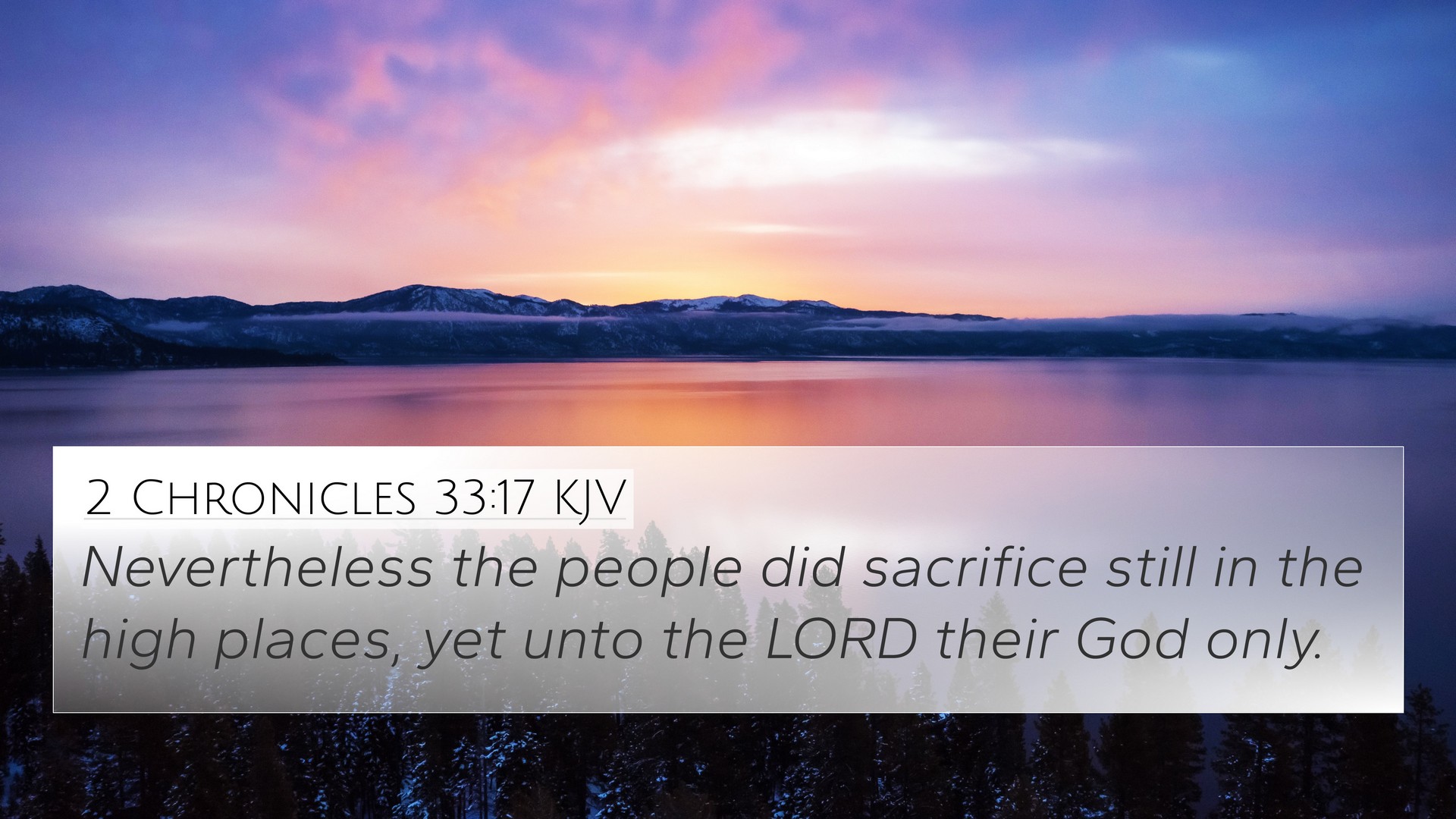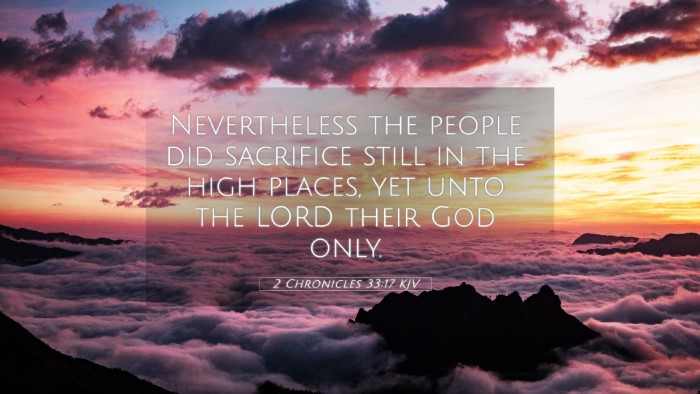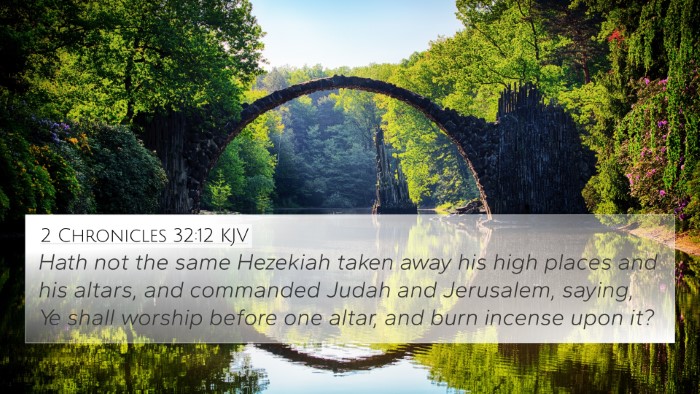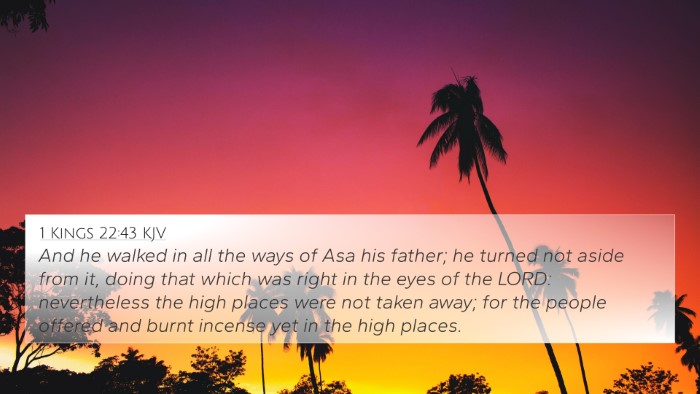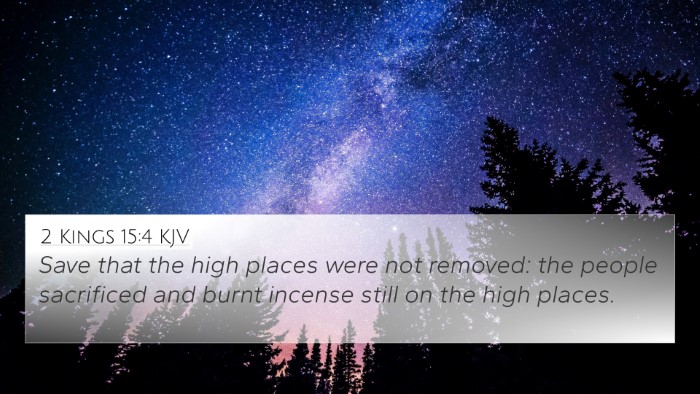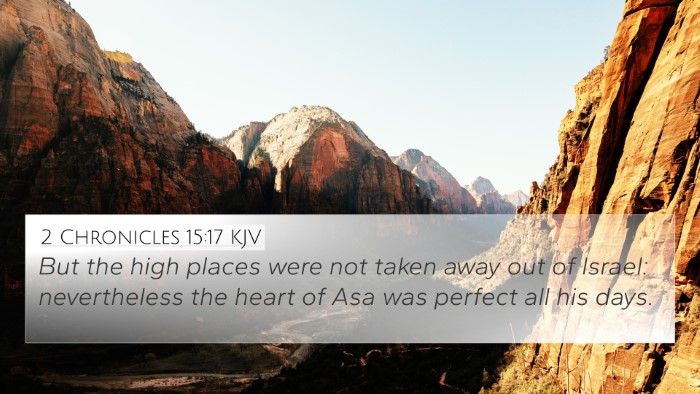Understanding 2 Chronicles 33:17
2 Chronicles 33:17 states: "Nevertheless, the people did sacrifice still in the high places, yet unto the LORD their God only." This verse highlights a significant moment in Jewish history, specifically during the reign of King Manasseh. Below is a comprehensive analysis and summary of the meanings derived from public domain commentaries.
Context and Background
King Manasseh's reign is marked by a profound narrative of idolatry, repentance, and restoration. After leading the nation into great sin, he eventually repents and seeks the Lord, which sets the stage for understanding this particular verse.
- Matthew Henry: Henry suggests that despite Manasseh's initial transgressions, his return to God did not eliminate the idolatrous practices among the people. Their sacrifices, although directed towards God, were still made in high places, symbolic of a mixed reverence and persistent error.
- Albert Barnes: Barnes emphasizes the idea that the people's continued practice of sacrificing in high places reflects a struggle between true worship and the remnants of past sin. It hints at the complexity of reform in religious practices.
- Adam Clarke: Clarke points out that the high places were often associated with unauthorized worship sites, representing a compromise. Even with their hearts aimed towards the Lord, the people were still entangled in past rituals.
Thematic Insights and Analysis
This verse serves to illustrate several themes within Scripture:
- Compromise in Worship: Worshipping in high places shows the struggle of holding onto traditions even when seeking God. This duality is prevalent in many believers' lives.
- God’s Patience: Despite their flawed practices, the verse indicates that God responds to genuine intentions and only desires His people’s devotion.
- The Nature of Repentance: The passage reflects the process of turning back to God, suggesting that true repentance might still involve flawed understandings and practices.
Cross-References
Several biblical passages relate to the themes presented in 2 Chronicles 33:17. These connections can offer further insights into understanding this verse and its implications:
- 1 Kings 12:31: Discusses the establishment of high places in Israel, providing context on the practices Manasseh dealt with.
- 2 Kings 21:3-6: Details Manasseh's idolatrous practices which led to widespread corruption.
- Deuteronomy 12:2-3: Outlines God's command to destroy high places, indicating the gravity of improper worship.
- Jeremiah 7:31: Addresses the abominations of the people, similar to the high places worship that persisted despite their repentance.
- Isaiah 57:7: Speaks about the high places and idol worship, showing the longstanding issue of divided loyalty towards God.
- James 1:8: Touches on the double-mindedness of humanity, akin to the people's divided worship highlighted in Chronicles.
- Matthew 15:9: Discusses vain worship, connecting to the idea of sincerity being essential in sacrificial acts.
Comparative Analysis
Through a comparative study, we can look at how this verse interacts with both the Old and New Testaments. For example, the Old Testament context of high places parallels the New Testament understanding of worship being transformed (John 4:21-24) where the physical location becomes irrelevant compared to the heart's posture.
Applying the Insights
For modern readers, 2 Chronicles 33:17 serves as a reminder about the purity of worship and the challenges that come with legacy practices. As we seek to follow God, it can prompt self-examination about any 'high places' we might be holding onto.
Tools for Bible Cross-Referencing
To enhance your study of biblical connections, consider utilizing these tools:
- Bible concordance for tracking themes.
- Bible cross-reference guide to find related verses.
- Online resources and software that facilitate cross-referencing.
- Chain references in study Bibles for thematic exploration.
Conclusion
In conclusion, 2 Chronicles 33:17 offers rich insights into the nature of worship and the complexities of human adherence to God's will. Through the lenses provided by significant commentaries and cross-references, we can deepen our understanding of how ancient practices continue to inform our faith today.
